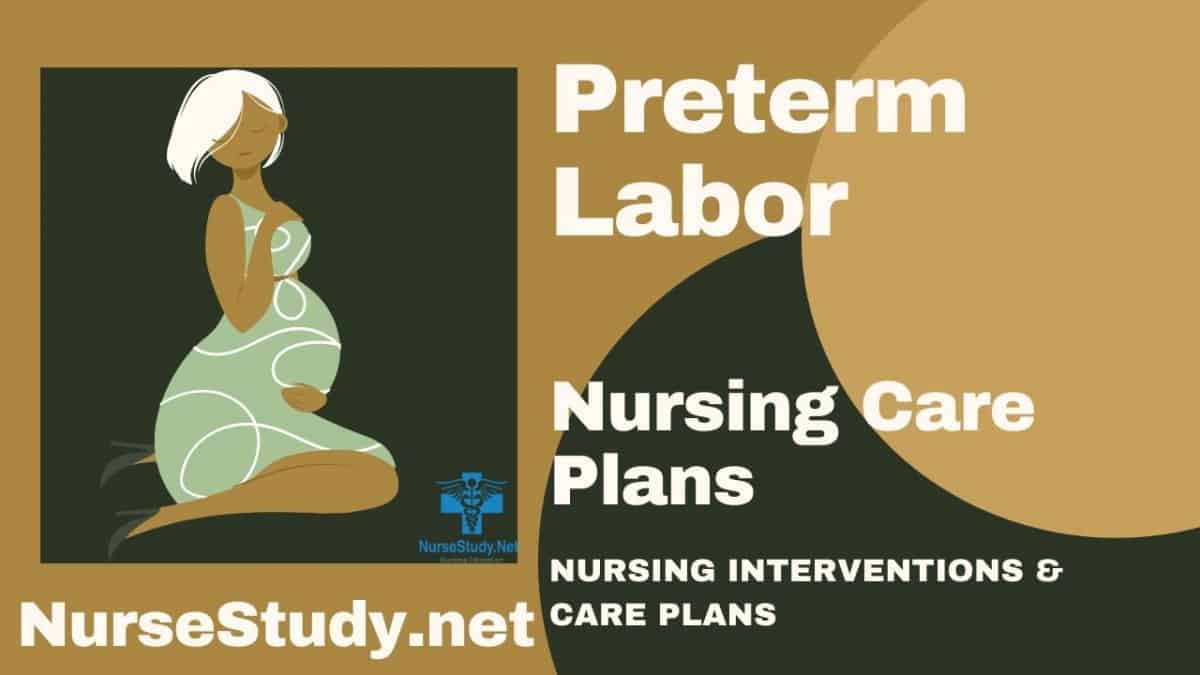Preterm labor nursing diagnosis requires careful assessment and intervention to prevent complications and support optimal outcomes for both mother and baby. This comprehensive guide explores the essential nursing diagnoses, interventions, and care plans for managing preterm labor effectively.
Understanding Preterm Labor
Preterm labor occurs before 37 weeks gestation and represents a significant concern in maternal-fetal health. While not all cases result in preterm birth, immediate nursing intervention is crucial for preventing complications and supporting positive outcomes.
Nursing Assessments
Physical Assessment
- Vital signs monitoring
- Contraction frequency and intensity
- Cervical changes
- Fetal heart rate patterns
- Vaginal discharge or bleeding
- Abdominal palpation
- Signs of rupture of membranes
Risk Factor Assessment
- Previous preterm births
- Multiple pregnancies
- Maternal health conditions
- Substance use
- Socioeconomic factors
- Infection presence
- Psychosocial stressors
Primary Nursing Diagnoses and Care Plans
1. Risk for Ineffective Labor Process
Nursing Diagnosis Statement:
Risk for Ineffective Labor Process related to premature cervical changes and uterine contractions.
Related Factors:
- Cervical insufficiency
- Maternal stress
- Infection
- Multiple gestation
- Previous preterm birth
- Inadequate prenatal care
Nursing Interventions and Rationales:
Monitor contraction patterns hourly
- Rationale: Early detection of labor progression
Implement prescribed tocolytic therapy
- Rationale: Delays labor progression
Position patient in left lateral position
- Rationale: Optimizes uteroplacental perfusion
Monitor fetal heart rate continuously
- Rationale: Ensures fetal well-being
Assess cervical changes
- Rationale: Tracks labor progression
Desired Outcomes:
- Labor progression will cease or slow
- Fetal status remains stable
- Gestation continues to term if possible
2. Acute Pain
Nursing Diagnosis Statement:
Acute Pain related to uterine contractions evidenced by verbal reports and facial grimacing.
Related Factors:
- Uterine contractions
- Cervical changes
- Pelvic pressure
- Back discomfort
- Anxiety
Nursing Interventions and Rationales:
Assess pain characteristics regularly
- Rationale: Guides pain management
Implement comfort measures
- Rationale: Reduces discomfort
Provide emotional support
- Rationale: Decreases anxiety
Teach relaxation techniques
- Rationale: Enhances coping
Administer prescribed medications
- Rationale: Controls pain
Desired Outcomes:
- Pain levels decrease
- The patient demonstrates effective coping strategies
- Anxiety levels reduce
3. Anxiety
Nursing Diagnosis Statement:
Anxiety related to the threat to maternal-fetal well-being evidenced by expressed concerns and increased vital signs.
Related Factors:
- Uncertain prognosis
- Fear for fetal well-being
- Lack of knowledge
- Hospital environment
- Previous pregnancy losses
Nursing Interventions and Rationales:
Provide clear information
- Rationale: Reduces fear of the unknown
Allow expression of concerns
- Rationale: Validates feelings
Include support persons
- Rationale: Enhances coping
Teach stress reduction techniques
- Rationale: Promotes relaxation
Maintain calm environment
- Rationale: Reduces external stressors
Desired Outcomes:
- Anxiety levels decrease
- Patient verbalizes understanding
- The support system actively participates
4. Risk for Impaired Fetal Well-being
Nursing Diagnosis Statement:
Risk for Impaired Fetal Well-being related to the preterm labor process.
Related Factors:
- Compromised uteroplacental perfusion
- Maternal stress
- Medication effects
- Premature cervical changes
- Potential cord compression
Nursing Interventions and Rationales:
Monitor fetal heart rate patterns
- Rationale: Detects distress early
Maintain optimal positioning
- Rationale: Promotes perfusion
Administer corticosteroids as ordered
- Rationale: Enhances fetal lung maturity
Monitor maternal vital signs
- Rationale: Ensures adequate perfusion
Track fetal movement
- Rationale: Indicates fetal well-being
Desired Outcomes:
- Fetal heart rate remains within normal limits
- No signs of fetal compromise
- Successful administration of fetal lung maturation agents
5. Knowledge Deficit
Nursing Diagnosis Statement:
Knowledge Deficit related to unfamiliarity with preterm labor management evidenced by questions and expressed concerns.
Related Factors:
- First experience with the condition
- Complex medical terminology
- Stress affecting comprehension
- Language barriers
- Limited health literacy
Nursing Interventions and Rationales:
Assess current understanding
- Rationale: Identifies learning needs
Provide written materials
- Rationale: Reinforces teaching
Demonstrate monitoring techniques
- Rationale: Enhances participation
Review warning signs
- Rationale: Promotes early recognition
Explain medications
- Rationale: Ensures compliance
Desired Outcomes:
- Patient verbalizes understanding
- Demonstrates proper monitoring techniques
- Identifies warning signs requiring attention
References
- Ackley, B. J., Ladwig, G. B., Makic, M. B., Martinez-Kratz, M. R., & Zanotti, M. (2023). Nursing diagnoses handbook: An evidence-based guide to planning care. St. Louis, MO: Elsevier.
- Carson RJ. Detection and prevention of premature labour. Neuro Endocrinol Lett. 2004 Dec;25 Suppl 1:35-41. PMID: 15735584.
- Georgiou HM, Di Quinzio MK, Permezel M, Brennecke SP. Predicting Preterm Labour: Current Status and Future Prospects. Dis Markers. 2015;2015:435014. doi: 10.1155/2015/435014. Epub 2015 Jun 15. PMID: 26160993; PMCID: PMC4486247.
- Harding, M. M., Kwong, J., & Hagler, D. (2022). Lewis’s Medical-Surgical Nursing: Assessment and Management of Clinical Problems, Single Volume. Elsevier.
- Herdman, T. H., Kamitsuru, S., & Lopes, C. (2024). NANDA International Nursing Diagnoses – Definitions and Classification, 2024-2026.
- Ignatavicius, D. D., Rebar, C., & Heimgartner, N. M. (2023). Medical-Surgical Nursing: Concepts for Clinical Judgment and Collaborative Care. Elsevier.
- Leitich H. Controversies in diagnosis of preterm labour. BJOG. 2005 Mar;112 Suppl 1:61-3. doi: 10.1111/j.1471-0528.2005.00587.x. PMID: 15715597.
- Silvestri, L. A. (2023). Saunders comprehensive review for the NCLEX-RN examination. St. Louis, MO: Elsevier.
